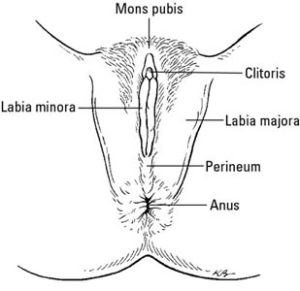PERFORMING FEMALE GENITAL SELF-EXAM
The vagina sometimes can seem like a complicated puzzle or a maze if you have no idea what it is made up of. Not understanding certain parts of your vagina as a woman can be likened to you not knowing the way around the house you have lived in all your life. The vagina is an apartment of its own in your body and as a landlord the effective way to manage a building is by knowing and establishing a solid relationship with your tenants.
The self-breast examination is common compared to the genital self-exam, but it is important to perform this examination to help you understand the changes in your vagina, to detect any form of abnormality and finding a cure or treatment if there is any. This, however should not replace annual pelvic exams done by a gynecologist. It is recommended that this exam should be carried out at least once a month. The best time for this exam is between menstrual periods and it is advised that vaginal creams or douches should not be used 24 hours before this examination.

STEPS FOR A SELF-EXAM
1) Wash your hands thoroughly and strip yourself of clothes below or you can stay naked
2) Get in a comfortable position, when sitting support your back with a pillow or the wall. Bend your knees so that your feet are near your buttocks. Then, spread your knees apart.
3) Make sure your pelvic muscles are relaxed to prevent discomfort
4) Hold a mirror in front of your genitals and familiarize yourself with every layer of your genitals comparing them with a diagram if you are not familiar with it to your own body vagina. The vulva is the first part to notice as it’s the external female genitalia and it consists of the inner and outer labia which are the fleshy tips of the vulva and the clitoris which is stimulated during sexual pleasure. Look for white, reddish areas around the vulva and new moles or freckles.
5) Spread your vaginal lips with one hand and look inside it with the mirror and light. The vagina has reddish pink walls with small folds throughout.
6) When ready and comfortable, insert your finger into your vagina and feel the inside walls. Inform your doctor if there are growths, lesions, cuts or sores around your vaginal area. To feel the cervix, try squatting and inserting while gently pushing your finger deep into your vagina.
7) You should examine your vaginal discharge, vaginal discharge should be clear and watery not smelling, but changes can occur in the vaginal discharge during stages of the menstrual cycle. But despite this, if your discharge has a smelling foul or fishy odor you should contact your doctor.
8) If you feel any lump, lesion or abnormal growth, you should contact your doctor immediately.
Understanding your vagina can boost your confidence, improve your health and guarantee sexual satisfaction. Remember to have an annual pap smear test done for your vagina to help check/reduce the risks of cervical cancer. Stay beautiful ladies.












